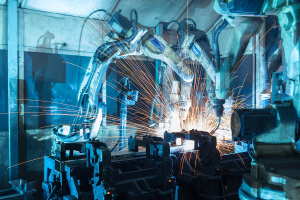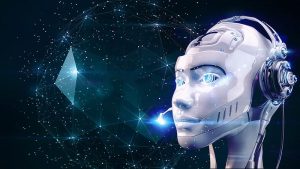With the advent of the digital era, more and more companies are realizing the importance of digital transformation.
At the beginning of 2023, the wave of generative AI triggered by ChatGPT swept the world, and the human ability to use tools reached a new level.
Subsequently, technology companies such as Microsoft and Baidu rose to the occasion and launched their versions of “new being” and “Wenxin Yiyin”, which are comparable to ChatGPT.
However, the last wave of “AI fever” has not yet faded, and recently AUTOGPT, which some channels claim to promote “the next frontier of prompt engineering”, has come into everyone’s view.
As a practitioner dedicated to the cable industry, I can’t help but think about how far AI intelligence is from our cable industry, seeing that AI is affecting people’s lives. How can it go to “change” the cable industry?
The wire and cable industry, as an important part of the basic materials industry, has also been facing the pressure and challenges of digital transformation.
Artificial Intelligence Cable Factory
Difficulty in recruiting and retaining workers, resulting in the cable industry labor costs rise, stability, lack of professional skills, etc., all restrict the development of cable companies.

As cable companies, product quality, production efficiency, and workers are closely related, production automation will become the choice to solve this problem.
There are now many large cable companies that have chosen to automate the production of wire and cable digital information, such as ZMS cable manufacturers.
These operating tools, called “cable robots,” have played a major role in production efficiency and standardization.
1 Building Intelligent Production Lines
The digital transformation of the wire and cable industry needs to be realized by building intelligent production lines.
Intelligent production lines include intelligent equipment, intelligent factories, and intelligent production management.
By introducing technologies such as the Internet of Things, artificial intelligence, and big data, the automation and intelligence of the production process are realized to improve production efficiency and quality.
2 Promote Digital Management
Digital transformation also requires the promotion of digital management.
This includes digital management in production, quality, supply chain, etc.
By establishing digital management systems, we can realize automatic data collection, analysis, processing, and application, thus improving the management level and decision-making efficiency of enterprises.
3 Optimize Customer Service
Digital transformation also requires optimizing customer service. Through digital technology, we realize intelligent responses and service of customer needs. For example, by establishing a customer service platform, promoting online customer service, and realizing automatic collection and processing of customer feedback data, customer satisfaction and loyalty can be improved.
Artificial Intelligence High-Voltage Cable Tunnel
In a tunnel ten meters underground, an intelligent inspection vehicle shuttles back and forth, and an inspection robot carrying firebombs moves to monitor cable faults, water level information, equipment information, and personnel access in the tunnel.
This is the recently developed 220 kV artificial intelligence high-voltage cable tunnel based on the concept of ubiquitous power Internet of Things.
Previously this high-voltage cable tunnel saved a lot of land resources but also brought inconvenience to maintenance and overhaul.
For this reason, China State Grid Nanjing Power Supply Company has used the Ubiquitous Power IoT to achieve artificial intelligence management, data interconnection, and open sharing of the cable tunnel.
“The upgraded tunnel is arranged with various types of sensing equipment such as temperature, humidity, partial discharge, etc., and highly sophisticated equipment such as intelligent inspection robots and precise positioning of personnel. After processing, nearly 1,000 pieces of information collected in real-time by more than 800 sensing devices in 53 categories in the cable tunnel were automatically integrated into 11 categories of monitoring information, enabling 24-hour monitoring of the cable tunnel and line status.” Zhao Xuan, the project leader, said that information on water level, environmental information, and traffic flow measured by electronic manhole covers can also be shared with relevant departments.
Gas and temperature and humidity monitoring systems are installed on the tunnel walls, temperature measurement optical fibers are installed on the cable surface, and fire inspection robots can realize 24-hour non-stop rest.
“The robot carrying fire extinguishing ammunition advances along the track at a speed of 2 meters per second, and once a fire occurs, it can arrive within one minute, which can replace manual inspection tasks, and can also complete autonomous fire extinguishing, video linkage command and other work in emergencies such as fires.” Zhao Xuan said.
Relying on artificial intelligence, cable line operation, and inspection mode has realized the essential change from “after-sales service” to “pre-diagnosis”, which has significantly improved the line health level.

At present, we can understand that artificial intelligence in the cable industry is a great boost, including saving a lot of human resources and time. But, completely at ease with the back of artificial intelligence, will be able to sit back and enjoy it.
In fact, of course not, as the saying goes, everything has its two sides, when we are actively involved in the field of artificial intelligence research, but also to think about the drawbacks it brings.
A Nuclear Submarine with Artificial Intelligence to Cut Undersea Cables is being Built
Last month the U.S. Navy revealed a new nuclear submarine scheduled for construction in the 2024 budget, named the Improved Virginia Class, focusing on submarine and undersea operations, or Mod VA SSW.
It will serve as the successor to the USS Jimmy Carter nuclear submarine and will perform submarine missions in waters southeast of our center.
Electric Boat Shipyard in Proton, Connecticut, has begun construction of the nuclear submarine, but many details remain classified.
What is certain is that the nuclear submarine focuses on intelligence warfare and is capable of operating under the sea, which means that the boat carries equipment designed to cut and listen to undersea cables.
As well as carrying the Orca Ultra Large Unmanned Undersea Vehicle, or XLUUV for short, and the MK11 Navy SEAL Special Delivery Vehicle SDV, it could be said to have been built specifically for special operations.
In the big picture, production automation does not exactly mean mass layoffs, but rather machine replacement of labor-intensive, high-risk safety, heavy environmental pollution, and labor-intensive jobs, and replacement will first cut from simple and repetitive jobs.
The direct benefit of automated production equipment is the improvement of labor productivity.
For the cable industry, production automation to the production of automation transformation is to promote the wire and cable manufacturing industry to reduce production costs, improve the level of technology, product quality, and equipment utilization, and shorten the production cycle, an important force for transformation and upgrading, while wire and cable enterprises in exchange for low cost and high quality.
In short, enhancing the level of production automation, the product production process to minimize errors, and reduce labor costs while protecting the quality of the product, will become a major trend in the wire and cable industry.
